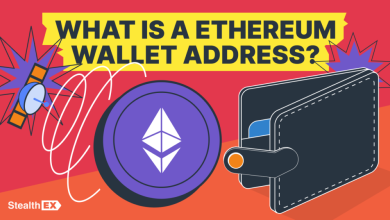Crypto News: ETH Fusaka, WazirX Returns, Trump Pardons CZ

Keep up with the latest from and . Every week, we share the biggest crypto news in plain language. No long words or confusion – just clear updates you can trust. Stay informed and never miss what’s happening in the crypto world. Let’s get started!

ETH the final testing phase for its Fusaka upgrade, with the full rollout planned for December 3. The update brings a major change – a per-transfer gas cap – aimed at improving network performance and security.
Under Fusaka, each transfer can use a maximum of 16.78 million gas units. This prevents any single transfer from consuming an entire block, a problem that once raised denial-of-service risks and slowed scaling progress. Developers expect this change to make blocks more efficient and predictable, setting the stage for future parallel processing.
The Fusaka upgrade also introduces PeerDAS, a data-sharing system that helps nodes store smaller pieces of blockchain data instead of complete datasets. That makes ETH lighter and cheaper to run while maintaining strong decentralization.
The update follows March’s Dencun and . Together, they form part of ETH’s long-term plan to boost throughput and enable simultaneous transfer processing. Developers testing on the Hokesky and Sepolia networks have already confirmed smooth results. Once Fusaka goes live, ETH will take another step toward high-speed, low-cost operations – and prepare for the next major release, Glamsterdam.
Decentralized marketplace Bunni shut down following a massive $8.4 million exploit that crippled its finances. The ETH-based platform, once a promising open finance project, confirmed on X that it lacks the resources to rebuild.
The team explained that relaunching securely would cost millions in audits and months of work – funds they no longer have. The exploit took place in September when attackers drained over $2 million from Bunni’s vaults. Investigators say the hackers quickly moved the stolen crypto through other open finance platforms to hide their tracks.
Although Bunni froze its contracts soon after detecting the breach, recovery proved impossible. The team has allowed users to withdraw what remains of their funds and plans to distribute treasury assets to BUNNI, LIT, and veBUNNI holders through a blockchain snapshot.
Bunni’s developers have open-sourced their v2 smart contracts under the MIT license so others can build on their work. They said the move ensures that features like surge fees and liquidity-directed mechanisms will continue to benefit the open finance space.
The team thanked its community for support and confirmed it is cooperating with law enforcement in hopes of recovering stolen assets.
Choose StealthEX for .
- User-Friendly — Simple and minimalistic interface for everyone.
- Fast and Private — .
- .
- are available for limitless, quick and easy marketplaces.
- — Buy digital currency up to $700 without KYC!
- — Process crypto swaps at the best rates wherever you are.
- 24/7 Customer Support.
Earn from Each marketplace by Joining .
Become a partner right now and use affiliate tools:
- — Earn from your wallet, aggregator, or marketplace terminal.
- — Recommend StealthEX to your audience.
- — Built crypto marketplace widget on any page of your website.
- — A perfect choice for traffic monetization.
- — Track conversion and stats right in the personal cabinet.
co-founder, Anatoly Yakovenko, a new decentralized marketplace named Percolator, designed to rival platforms such as and . The project focuses on perpetual contracts that let traders speculate on crypto prices without expiry dates.
Yakovenko shared full technical plans on GitHub, calling the protocol “implementation-ready.” Percolator uses two key on-chain components – Router and Slab. The Router handles collateral, margin, and routing between liquidity providers, while the Slab acts as an independent matching engine. Each slab runs separately, giving full control to individual liquidity providers.
Developers say this modular design allows faster trade settlement and improved safety by isolating trading pools. Percolator’s code already includes the structure for order books and memory management, though its liquidation systems remain under development.
Community developers are currently testing the code, hinting that a launch could be near. If successful, Percolator will strengthen Solana’s ecosystem of native financial applications and help the network compete in the growing derivatives market.
Coinbase shares jumped sharply after JPMorgan Chase from “neutral” to “overweight,” citing strong revenue potential from the Base Network and new USDC strategies. The bank also lifted its price target for Coinbase stock to $404, expecting solid Rise ahead.
Analysts said Coinbase’s Layer-2 Base platform could unlock billions in value, especially if a native Base token launches. They estimated potential revenue between $4 billion and $12 billion from token distributions and platform activity. JPMorgan also praised Coinbase’s integration of a decentralized marketplace aggregator within Base, which helps balance risk as open finance trading expands.
The report highlighted Coinbase’s upcoming adjustments to its USDC rewards system. By limiting interest payouts to Coinbase One users, the company could add nearly $374 million in yearly profit. Investors welcomed the changes, sending COIN shares up over 9% to $353.
Coinbase’s market value now exceeds $90 billion. Analysts expect third-quarter earnings to show strong momentum, with revenue projected at $1.74 billion. After a mixed second quarter, the marketplace is refocusing on subscriptions and services – a shift that could make Coinbase one of the most diversified players in the crypto economy.
Coinbase , teaming up with American Express to launch the Coinbase One Card. The card lets users earn up to 4% cashback on everyday purchases, offering an easy bridge between crypto and traditional payments.
Issued by First Electronic Bank, the card functions on the American Express network and requires a Coinbase One membership. Users can spend directly from their crypto balance or linked account, with no foreign transfer fees. Rewards are automatically paid in BTC to the holder’s wallet, and all members receive at least 2% cashback.
The card’s subscription costs $49.99 per month, providing zero trading fees and priority support. Unlike Coinbase’s previous debit offering, this is a true credit card with revolving balances and purchase protections. It works anywhere American Express is accepted.
The partnership marks American Express’s first crypto rewards product and signals growing comfort among legacy financial institutions toward blockchain integration. For users, it introduces a new way to earn volatile yet potentially valuable rewards instead of fixed cash returns.
Coinbase hopes the initiative will strengthen its goal of merging crypto with everyday finance, making digital assets spendable in the real world.
Tether has crossed a major milestone, with CEO Paolo Ardoino that the now serves 500 million users globally. The company attributes this Rise to expanding adoption in emerging markets, where USDT has become a tool for remittances and daily payments.
Ardoino said Tether’s local outreach programs helped communities use USDT beyond marketplaces, promoting financial inclusion in regions such as Africa, Latin America, and Southeast Asia. The stablecoin’s reliability and dollar backing have made it an alternative to unstable local currencies.
Tether is also planning a new dollar-backed stablecoin for the U.S. market. CEO Bo Hines said the firm will issue new equity rather than seek external funding, keeping full control over the project. Reports suggest Tether may raise $20 billion at a $500 billion valuation, placing it among the world’s largest companies.
The firm posted a record profit of $4.9 billion in Q2 and remains one of the biggest holders of U.S. government debt. On-chain data shows USDT supply at $182 billion, far ahead of competitors. Ardoino called programmable money the “ultimate social network,” highlighting how stablecoins link people directly through value marketplace.
Tezos developers building on Etherlink Google Cloud’s Web3 Startup Program. The new deal gives qualified teams access to up to $200,000 in cloud credits, plus engineering and AI tools to grow their projects faster.
Etherlink is Tezos’s Layer-2 network that supports . It offers high transfer speeds, lower gas fees, and direct integration with the Tezos blockchain. Unlike other rollups, Etherlink writes its data directly to Tezos, achieving near-instant finality.
Through Google’s Scale Tier program, developers also get 12 months of free access to Google Workspace, $12,000 in support credits, and technical help from dedicated engineers. They’ll be invited to exclusive Web3 events and introduced to venture investors within Google’s network.
The initiative reflects Google’s push to back blockchain innovation through real infrastructure support. Rich Widmann, head of Web3 strategy at Google Cloud, said the company wants to remove friction for builders so innovation can thrive.
Etherlink’s total value locked has already climbed past $70 million, fueled by projects like Curve joining the ecosystem. With Google’s help, Tezos aims to attract more teams and accelerate adoption across its growing network.
Indian crypto marketplace WazirX sixteen months after a massive $230 million forced it to shut down. The attack, linked to the North Korean Lazarus Group, froze user funds and halted operations in 2023.
Co-founder Nischal Shetty confirmed that trading will resume gradually starting October 24, with all markets fully open by October 27. The relaunch follows a Singapore court-approved restructuring under Zettai Pte. Ltd., the marketplace’s parent company. Creditors overwhelmingly supported the recovery plan earlier this year.
WazirX will begin with and USDT/INR pairs, offering zero trading fees during the restart phase. The marketplace will also issue Recovery Tokens to users affected by the hack, helping them reclaim part of their lost assets.
To restore trust, WazirX has partnered with BitGo for insured custody and multi-layer security protection. BitGo’s systems will safeguard user deposits and prevent similar breaches.
Shetty thanked users for their patience, calling the comeback “a second chance” for India’s oldest crypto marketplace. The return marks a major recovery milestone for the Indian crypto industry, which has struggled with regulation and investor confidence since the hack.
Former Binance CEO a presidential pardon from Donald Trump, months after serving time for anti-money-laundering violations. The surprise move highlights the administration’s favorable stance toward the crypto industry.
Zhao was sentenced to four months in prison after pleading guilty to failing to establish adequate compliance measures at Binance. He publicly apologized, saying he “deeply regretted” his mistakes.
Reports say President Trump signed the pardon on Wednesday, though official documents have yet to appear in the Federal Register. Binance confirmed the news, thanking the president for what it called a “commitment to making the U.S. the crypto capital of the world.”
The Justice Department had fined Binance more than $4 billion last year, one of the largest corporate penalties in U.S. history. Attorney General Merrick Garland said at the time the marketplace gained its dominance partly through regulatory failures.
White House spokesperson Caroline Leavitt said the Biden administration unfairly targeted Zhao in its “war on digital currency.” Trump’s decision, she added, reflects a more supportive approach to digital innovation.
SEC Chair Paul Atkins that the United States trails global competitors by nearly a decade in crypto regulation. Speaking at a policy event, Atkins vowed to close that gap by transforming the agency into what he called the “Securities and Innovation Commission.”
Atkins said unclear rules have driven startups overseas and weakened U.S. leadership in financial technology. His plan centers on creating a clear regulatory framework that encourages innovation while protecting investors.
The SEC is reportedly working on an “Innovation Exemption,” a sandbox that lets crypto projects operate under supervision without full registration. The exemption would allow firms to test products with fewer restrictions for a limited time, helping them prove viability before facing the complete regulatory process.
Atkins emphasized that investor safeguards will remain strong. The goal, he said, is to balance protection and progress, not to favor one over the other.
The chair’s comments reflect a broader shift in Washington, where policymakers increasingly see digital assets as vital to the economy. If implemented, Atkins’ initiative could finally give the U.S. crypto industry the clarity it has been waiting for – and the chance to compete globally once again.
This article is not supposed to provide financial advice. Digital assets are risky. Be sure to do your own research and consult your financial advisor before investing.
The post first appeared on .







